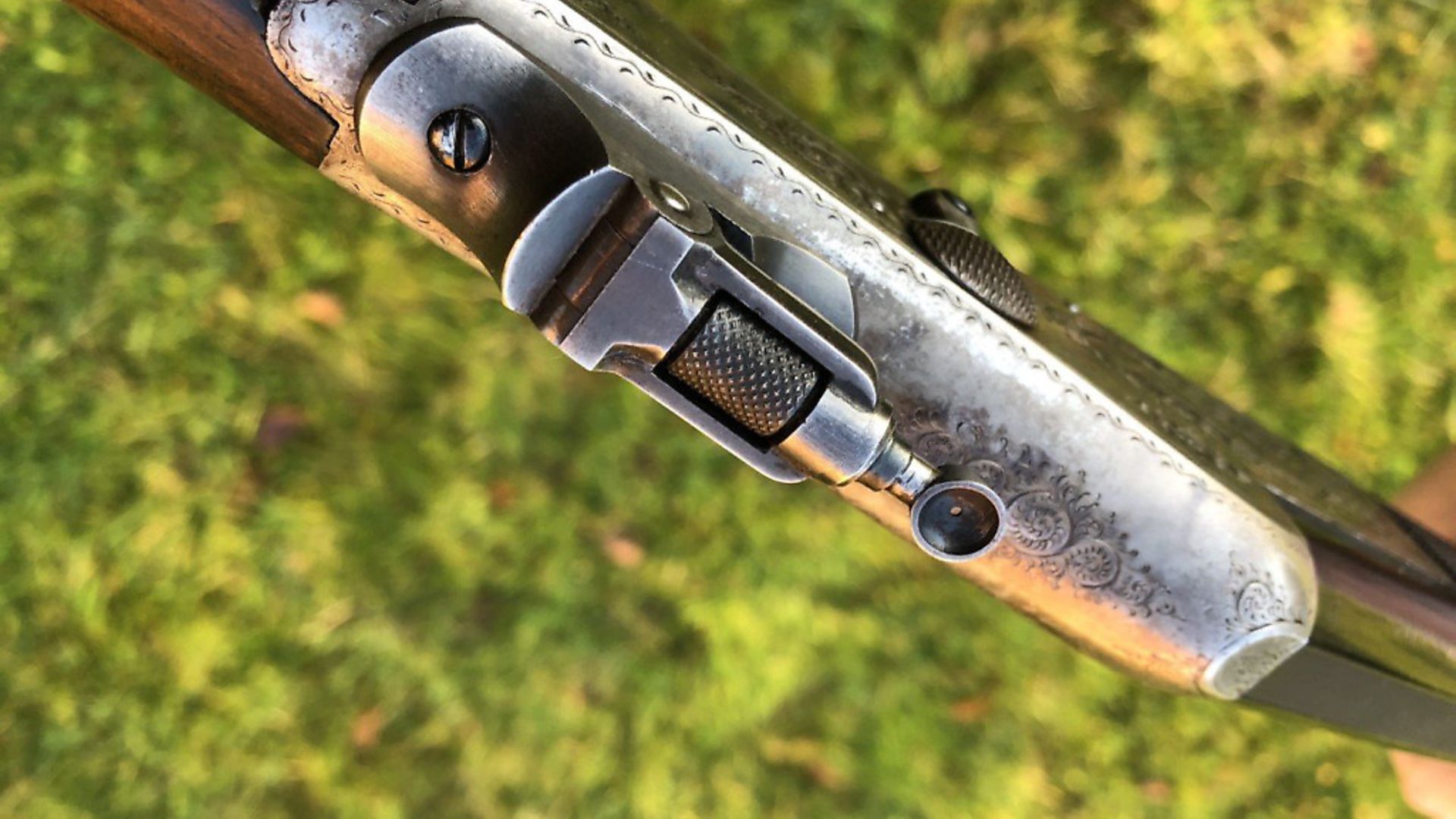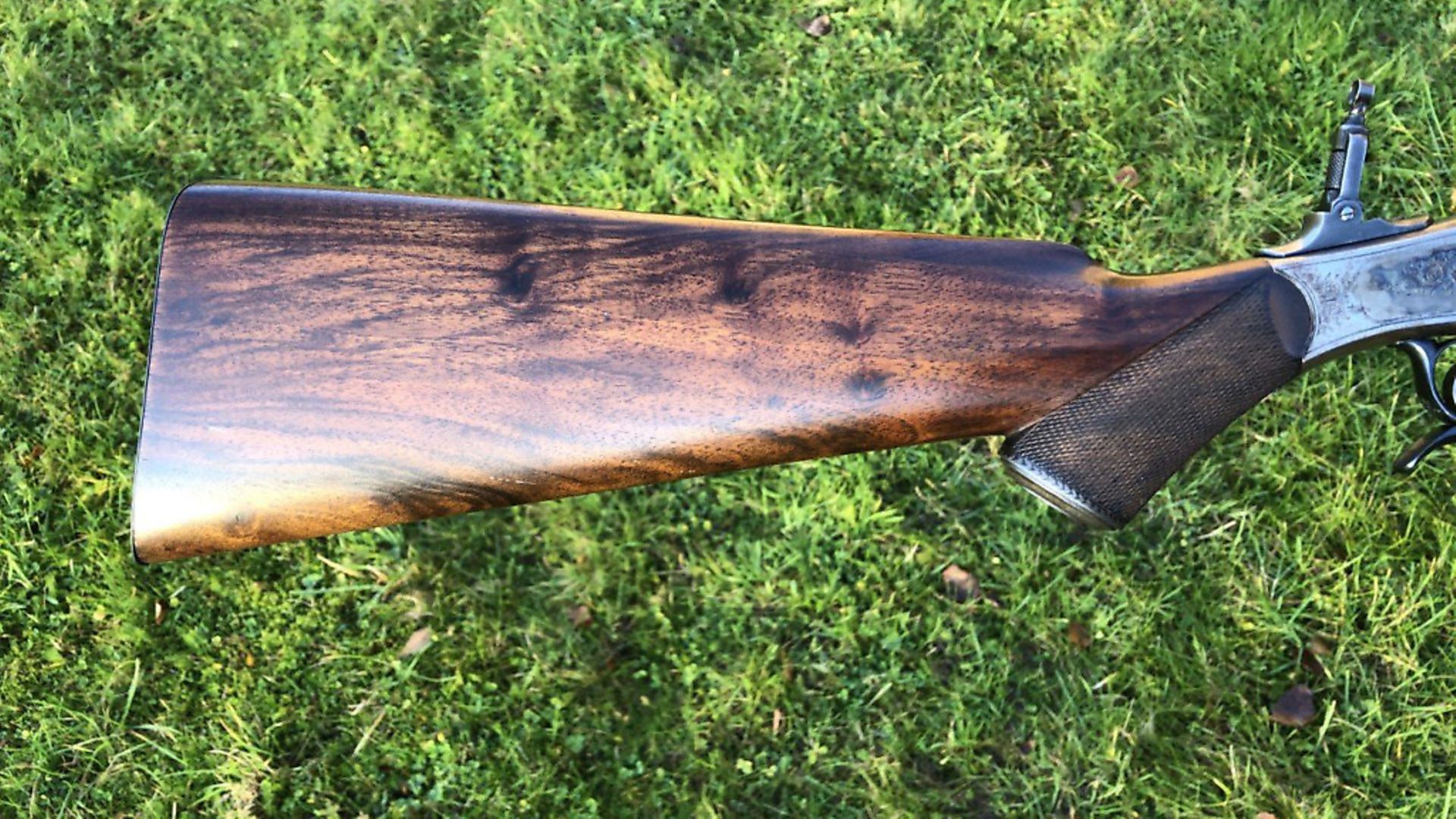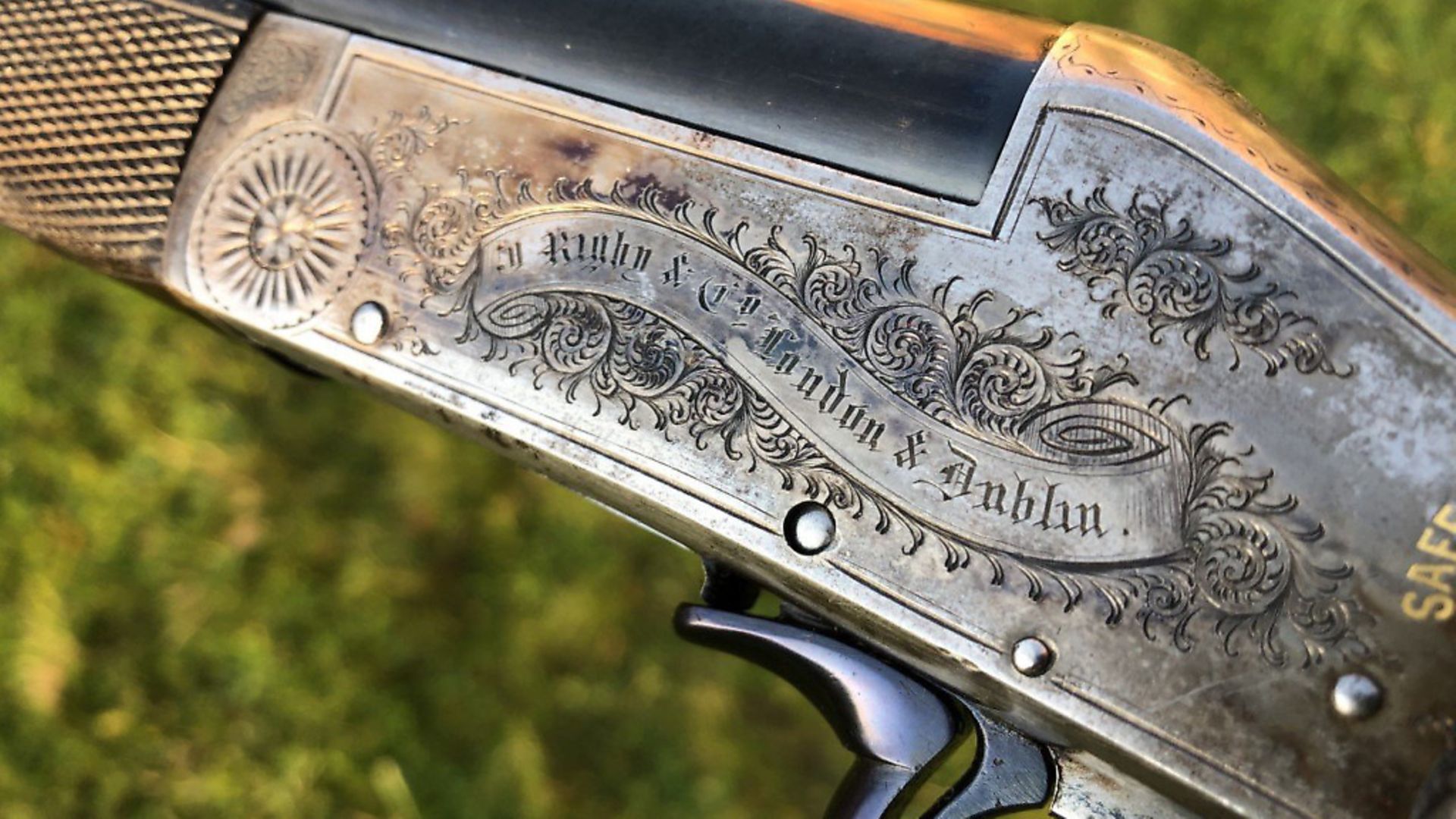19th century rook rifles
Diggory Hadoke takes a closer look at a 19th century Rigby rook rifle & pays homage to Samuel Allport, one of the most revered makers of rook rifles credit: Archant Today’s small calibre rifles are mostly considered tools rather than sporting arms. Their most desirable characteristics are accuracy, low maintenance, ability to take abuse, and
Would you like to appear on our site? We offer sponsored articles and advertising to put you in front of our readers. Find out more.
Diggory Hadoke takes a closer look at a 19th century Rigby rook rifle & pays homage to Samuel Allport, one of the most revered makers of rook rifles
Today’s small calibre rifles are mostly considered tools rather than sporting arms. Their most desirable characteristics are accuracy, low maintenance, ability to take abuse, and low price. However, it was not always so.
The Victorian and Edwardian rook and rabbit rifle is often a thing of beauty, being as well conceived and carefully made as any sporting gun or rifle of the day.
The famous Holland & Holland type of rounded boxlock with a top-lever is familiar to most people. However, from time to time a different shape catches the eye, and something special arrives. Today, we are going to look at just such a rifle.
Our subject falls nicely into that very useful part of the current firearms legislation, Section 58, which covers “antiques and curios”. You can own it without a licence, as long as you don’t intend to use it. If kept this way, you don’t even have to lock it in a safe or vault; it can hang on the wall in all its glory.
That, surely, is the appeal of Section 58 rook rifles to many people: they are superb quality and you can actually enjoy them without the security worries that come with a collection of Section 1 or Section 2 firearms.
While Holland & Holland Royal and Ross models are common, rook rifles by Rigby are not. The example featured here is in .300 CF and bears serial number 10057 on the barrel only. The frame and fore-end are stamped “11”. It was not unusual for rook rifles to have a distinct numbering system outside the normal chronology of a gunmaker. This is because they were usually supplied by specialist makers to order, rather than being built, or part-built, in house.
The profile of the rifle is distinctive. The action is 6” from knuckle to rearmost edge, at the hand. The metal of the back end of the action slopes into the hand, actually forming a third of its length, whence it morphs into a wider pistol grip with steel grip cap.
The colour case hardened action is neatly engraved with small scrolls, along with a banner declaring “J. Rigby & Co. London & Dublin”. Rigby opened his London premises in 1865, eventually closing his Dublin shop and moving to London full-time.
The left side of the action has a fan-shaped safety slide, cross-hatched neatly for grip, which is actually very smooth and easy to push forward into the ‘live’ position – the word “SAFE”, inlaid in gold, is covered when you do so.
On the back slope of the action, there is a peep sight, adjustable for height, which can be pushed forward to lie flat or pulled back to stand erect, when needed. When not in use, the front blade can be aligned with the V-notched rear leaf sights, of which there are two (engraved with 50- and 100-yard markings).
The fore-end is chequered and of snap-on type (without a visible catch of any kind). The nicely figured stock ends with a plain blued steel butt-plate with a distinct swelling at the word “bump”.
The 26½” black steel barrel is flat topped, with a stippled anti-glare finish. Operation is by snap under-lever, which slides back a single bolt, recessed into the breech face. This engages with a single bite in the lump. Ejection is non-selective.
The likely load for this rifle appears to be .300 Rook, which is an 80gr lead bullet, propelled by a charge of 10 drams of black powder or 4.5gr of smokeless powder. As the name implies, it was designed as a relatively short-range rifle for dispatching vermin around the farm or estate.
.300 ammunition was still available from Eley in 1928, sold in boxes of fifty. However, like all the other small calibre rifle rounds of its type, it eventually succumbed to the pressure put on it by the .22 LR cartridge, which was cheaper, quieter, cleaner and effective to 200 yards in skilled hands.
A very similar rifle to this Rigby (also by Rigby) was auctioned in 1984 at Christie’s. I have seen very similar rifles by Purdey, Bland, and Scott, to name but three.
Colin Greenwood identified the maker of these rifles a Samuel Allport of Birmingham. Allport started at 3 Weaman Row and moved to 50 Whittall Street. He became proof master of the Birmingham Proof House in 1892. Allport sold his business at auction in 1893, having no heir (his son died aged seventeen). He died six years later in 1899, aged seventy-six.
Like Ellis Bros, Allport clearly made rook rifles for the trade at large, including prestigious London makers like Purdey, Boss, and Rigby. Any inspection of these little rifles attests to the superb quality Allport, like many other Birmingham makers, could, and did, produce when required.
Though his beautiful rifles remain admired and collected, few gun enthusiasts today consider the name Allport when compiling a mental list of their favourite rifle makers. His name adorns few guns and rifles, but Samuel Allport left a legacy of beautiful work, for which his old customers continue to take the credit. Such is the fate of a gunmaker to the trade.
Related Articles
AN ICELANDIC SAGA
Diggory Hadoke takes a closer look at a 19th century Rigby rook rifle & pays homage to Samuel Allport, one of the most revered makers of rook rifles credit: Archant Today’s small calibre rifles...
By Time Well Spent
AFFORDABLE INNOVATION
Diggory Hadoke takes a closer look at a 19th century Rigby rook rifle & pays homage to Samuel Allport, one of the most revered makers of rook rifles credit: Archant Today’s small calibre rifles...
By Time Well Spent
Get the latest news delivered direct to your door
Subscribe to Rifle Shooter
Elevate your shooting experience with a subscription to Rifle Shooter magazine, the UK’s premier publication for dedicated rifle enthusiasts.
Whether you’re a seasoned shot or new to the sport, Rifle Shooter delivers expert insights, in-depth gear reviews and invaluable techniques to enhance your skills. Each bi-monthly issue brings you the latest in deer stalking, foxing, long-range shooting, and international hunting adventures, all crafted by leading experts from Britain and around the world.
By subscribing, you’ll not only save on the retail price but also gain exclusive access to £2 million Public Liability Insurance, covering recreational and professional use of shotguns, rifles, and airguns.
Don’t miss out on the opportunity to join a community of passionate shooters and stay at the forefront of rifle technology and technique.









